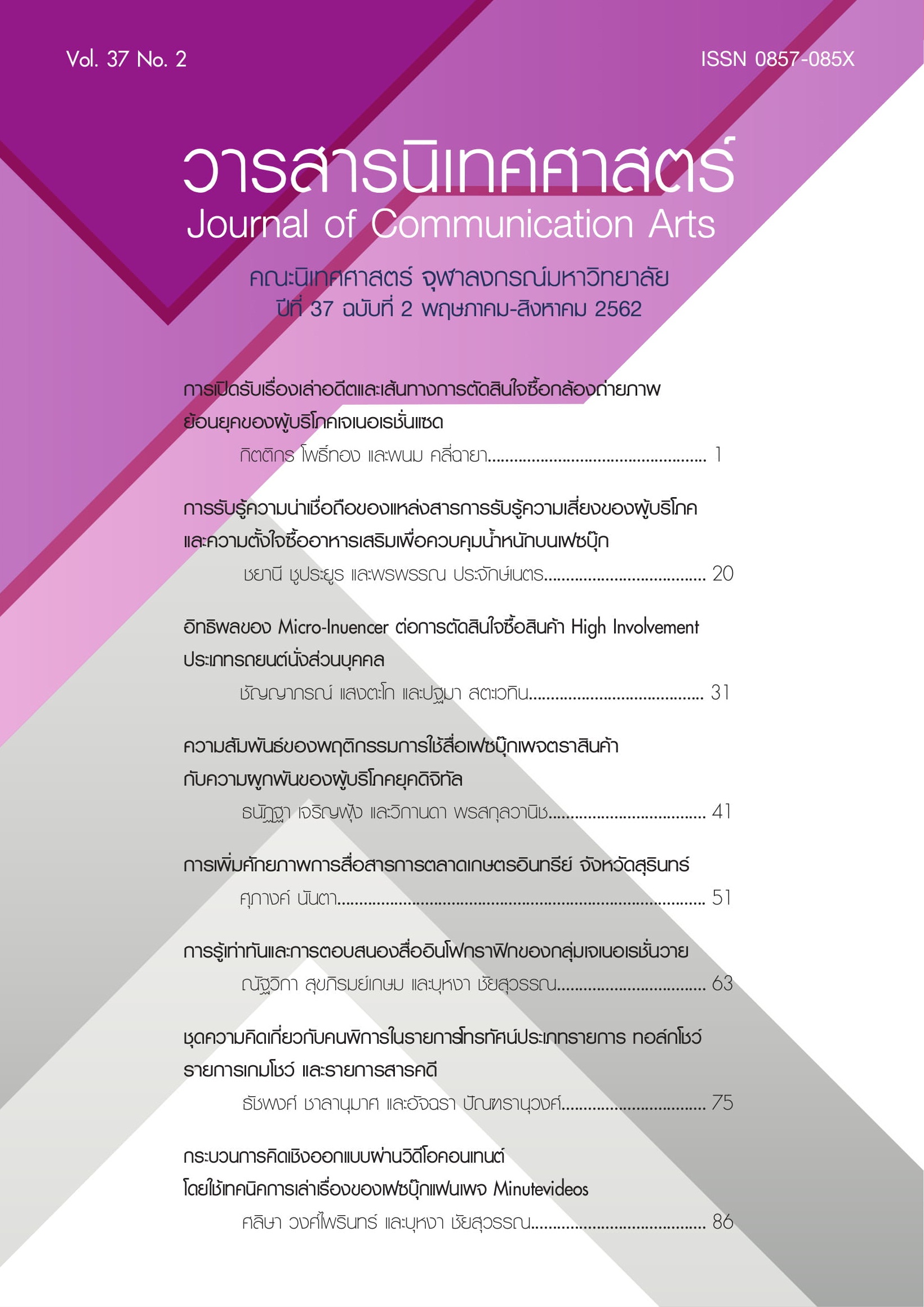The Influence of Micro-Influencer on the Decision to buy High Involvement product (Personal Car)
Main Article Content
Abstract
This qualitative study aimed to investigate 1) the behavior of information exposure and search before make decision to buy High Involvement product (Personal Car) 2) the satisfaction and attitude of the perception about personal car review from micro-influencer in social media 3) the influence of micro-influencer and macro-influencer on the decision to buy High Involvement product (Personal Car). The methods used to collect the data is focus group discussion were employed with the group of first purchasing and second purchasing or more. Each group consist of 1) First Jobber 2) Manager Level and 3) Family (Prices was set between 700,000-1,500,000 bath and the period of purchasing was for one year). In total, 12 participants took part in these discussions.
The result illustrated that the consumer adopts and reach to information from Micro-Influencer such as family, acquaintances who have knowledge of cars or reviews from real users on the online channel. They find information before making a purchase but do not know what these resources are Micro-Influencer. When the consumer understands the meaning and context of Micro-Influencer subs equently, the reliability of the Micro-Influencer and content of review can change the attitudes in perception levels. Moreover, comparing the influence levels between Micro-Influencer and Macro-Influencer on the decision to buy found that Micro-Influencer Influence on purchasing decision at the level of preference while Macro-Influencer Influence at the level of consideration. However, both of them cannot accelerate the purchase decision because the affected factors is a marketing mix such as promotion and after sales service.
Article Details
References
ฟิลิป คอตเลอร์, เหมะวัน การตะจายา, และไอวัน เซเตียวาน. (2561). การตลาด 4.0 [Marketing 4.0] (ณงลักษณ์ จารุวัฒน์, ผู้แปล). สมุทรปราการ: เนชั่นบุ๊คส์. (ต้นฉบับพิมพ์ปี ค.ศ. 2017)
พรรณภัทร มีศรีดี. (2555). การวางแผนการสื่อสารตราสินค้าระหว่างสินค้าประเภทที่มีความเกี่ยวพันสูงและสินค้าประเภทที่มีความเกี่ยวพันต่ำ (High Involvement & Low Involvement) บน Facebook Fanpage. วิทยานิพนธ์ปริญญามหาบัณฑิต มหาวิทยาลัยธรรมศาสตร์.
รัฐญา มหาสมุทร. (2558). กลยุทธ์การสื่อสารของผู้ทรงอิทธิพลทางความคิดในโลกออนไลน์ที่มีผลต่อทัศนคติของกลุ่มผู้ติดตาม. วิทยานิพนธ์ปริญญามหาบัณฑิต สถาบันบัณฑิตพัฒนบริหารศาสตร์.
อดุลย์ จาตุรงคกุล. (2555). พฤติกรรมผู้บริโภค. กรุงเทพฯ: มหาวิทยาลัยธรรมศาสตร์.
Bouvier G., (2016). Social media and its impact on intercultural communication: The challenges for a discourse approach, Journal of Communication Arts, 34(3), 57-66.
Vaughn, R. (1980). How advertising work: A planning model. Journal of Advertising Research, 20(5), 27-33.
We are anthology. (2017). The difference between micro, macro and mega influencers. Retrieved April 12, 2018, from http://weareanthology.com/we-are-anthology-digital-influencer-and-social-media-marketing-blog/2017/4/26/the-difference-between-micro-macro-and-celebrity-influencers


